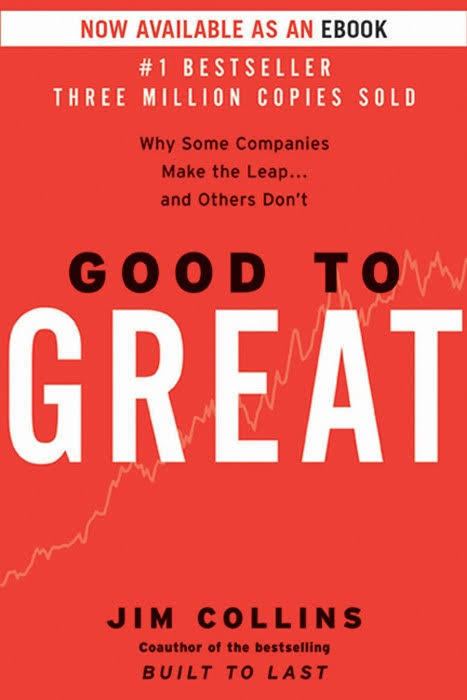8.2 /10 1 Votes8.2
4.2/5 Barnes & Noble Subject Corporate strategy ISBN 978-0-06-662099-2 Page count 320 Country United States of America | 4/5 Goodreads Publication date October 16, 2001 Pages 320 Originally published 16 October 2001 Publisher William Collins Genre Non-fiction | |||||||||||||||||||||||||||||||||
 | ||||||||||||||||||||||||||||||||||
Similar Works by James C Collins, Business books, Leadership books | ||||||||||||||||||||||||||||||||||
Video review for good to great by jim collins
Good to Great: Why Some Companies Make the Leap... and Others Don't is a management book by Jim C. Collins that describes how companies transition from being good companies to great companies, and how most companies fail to make the transition. The book was published on October 16, 2001. "Greatness" is defined as financial performance several multiples better than the market average over a sustained period. Collins finds the main reason certain companies become great is they narrowly focus the company’s resources on their field of key competence.
Contents
- Video review for good to great by jim collins
- Writing
- Seven characteristics of companies that went from good to great
- Great companies
- Unsustained Companies
- Response
- References
The book was a bestseller, selling four million copies and going far beyond the traditional audience of business books.
Writing
Collins used a large team of researchers who studied "6,000 articles, generated more than 2,000 pages of interview transcripts and created 384 megabytes of computer data in a five-year project".Top members of this research team were
Seven characteristics of companies that went from "good to great"
Great companies
Collins finds eleven examples of "great companies" and comparators, similar in industry-type and opportunity, but which failed to achieve the good-to-great growth shown in the great companies:
Unsustained Companies
Collins includes 6 examples of companies that did not sustain their change to greatness. These companies, "... are looked at separately as a clump":
Response
The book was "cited by several members of The Wall Street Journal's CEO Council as the best management book they've read."
Publishers Weekly called it "worthwhile", although "many of Collins' perspectives on running a business are amazingly simple and commonsense". Similarly Holt and Cameron state the book provides a "generic business recipe" that ignores "particular strategic opportunities and challenges."
Steven D. Levitt notes that some of the companies selected as "great" have since gotten into serious trouble, such as Circuit City, while only Nucor had "dramatically outperformed the stock market" and "Abbott Labs and Wells Fargo have done okay". He further states that investing in the portfolio of the 11 companies covered by the book, in the year of 2001, would actually result in underperforming the S&P 500 Levitt concludes that books like this are "mostly backward-looking" and can't offer a guide for the future."
Collins reaffirmed that "The books never promised that these companies would always be great, just that they were once great."
